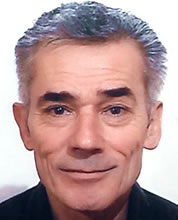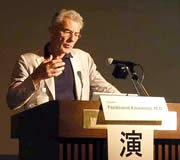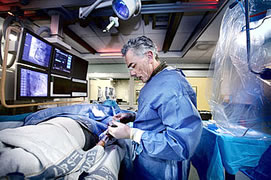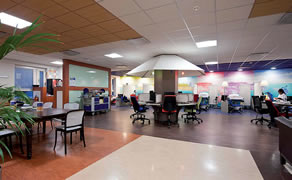
|
(continued from Part One) Q: Should the radial approach always be tried first? But if a diabetic female patient has a very small radial artery, just don't do TRI. In the very early years, I said transradial intervention is not a religion. You don't have to do it. It's not a sin taking the femoral. TRI is just a very safe and practical alternative to TFI [transfemoral intervention], but TFI is a very safe, and well-proven, good clinical practice. Only under some circumstances there are better ways that are more comfortable for the patient, but if you have to do TFI then do TFI! If you can't do TRI, don't do TRI. Complications for TRI will emerge, and indications for TFI will persist. So don't push it to the limit, because in the end the patient will lose their arm artery and I think that's a waste. You initially asked me, what is the biggest complication? I think radial artery occlusion is really something we have to work on. There are ways to prevent it, maybe not for 100% but we can do our best, and then if you have radial artery occlusion what to do next? And it is my personal view that you should try to open it up, not to restore blood flow to the hand, because that's not the reason, but to restore the way back to the heart. And so, what we are not doing properly is to do a good follow-up of patients after TRI. Our patients are leaving the same day, usually we don't see them ever back again after PCI, after TRI. But actually maybe I think that's something we should work at. If a patient has an early occlusion, should we do an echo, should we do a Doppler, should we find a method to open it up? I don't know. I don't have the answer, I don't even know how to do it. I opened some occluded radials in patients. Some were successful, some were not. Some were difficult, some were easy. Some were painful, some were comfortable. I don't have the answer, but that's something for future research I think. But it's not something innocent. And the rest is all either rare or is something you can handle easily. Q: Isn't achieving patent hemostasis an issue not just for physicians, but for the cath lab and recovery room staff as well?
Now we know that prolonged compression and too tight, like your rhyme, will result in radial artery occlusions, so we should develop techniques to prevent that. I think training for nurses is just as important as training for doctors, actually, if a center is going to start, because one cannot do it without the other. Q: What about equipment like compression devices? Although it's not very popular, the best technique is manual compression because you can really gently control that. That's, of course, a waste of manpower, but anything that imitates the sensation you have under your fingers should be nice. I think today maybe Terumo's TR Band is the easiest to use and the most fashionable product. But I don't think it'll stay there forever because they also fail when, after four hours, we release pressure from patients and patients start bleeding, I don't know if it results in yes or no radial artery occlusion if you keep pressure on too long. But, certainly, there are ways to improve hemostasis devices. Q: Where do you see the future of TRI going?
Dr. Kiemeneij: What is the future? I think today we are in a situation where TRI is at least globally recognized -- it's not globally accepted, but everyone recognizes TRI as a valuable, feasible, safe technique. It becomes globally accepted if it's really going to become the default technique, just as TFI right now in the U.S. It was in Europe in 2010. In many countries the number of TRIs are higher than the number of TFIs, so you can say that TRI is becoming the default technique. I think we are heading towards that, but before getting there, I think some major concerns should be solved. One that has already been discussed is to find a solution for radial artery occlusion, because I think every patient should have the right to have unlimited access to TRI. Unlimited, I mean many times, if necessary. Second is proper training. And not only proper training in transradial. Now we are in a very interesting phase: young doctors are not proficient anymore in femoral puncture techniques and femoral hemostasis. Especially throughout Asia, in Japan and China; more and more in India, young doctors are all raised with radial as the default, the standard technique. So, that introduces a new problem because femoral approach is there to stay, for many reasons: radial contraindications, absence of radial artery, patient's preference, bigger devices, for CTOs, for example, for TAVI procedures. Who is going to teach our new cardiologists not only how to puncture but also how to handle femoral arteries, to puncture femoral arteries, to apply proper hemostasis, the find proper ways to solve problems, how to train the nursing staff? We should actually find kind of a global cooperation and standardization of a training program, maybe accreditation, which not only focuses on transradial access but also transfemoral access, starting with puncture techniques, ending with hemostasis, and everything in between, in a more standardized way. So you have master classes, you have beginner's classes, you have proctorships, and I have seen that in the U.S. you have a lot of those initiatives already and I hope that sooner or later will become something standardized - also, embraced by the American Heart Association, the European Heart Association, Asian Heart Association, that the local heart associations also focus attention on a proper training program. The third one is if you want the radial artery to become the standard technique, you need to have more mortality data. Safety data, I think, they're already there. But mortality data are hard to get and it's still very important to have them. But the longer you wait the more difficult it is to get proper randomized studies. Because, sooner or later, in Asia for example, already 70% of all procedures are done via radial, so it will be more and more difficult to randomize. Those hard data should be there. Cost effectiveness is also an important issue. In our tweets we already mentioned that, but that needs a paradigm shift from the insurance companies. You know, the weird thing that's happening in our situation, since 1994 I already do stenting on an outpatient basis - so the patient walks in in the morning and walks away the same day, back home.
And we have this beautiful lounge that's kind of an airport business class lounge where we receive our patients in our hospital. They have everything in a normal business lounge and they're sitting and waiting there dressed, and they are going in and going out dressed, and the patients are well taken care of, but they don't have the idea that something serious is going to happen. We treat those patients on a same day basis, but the insurance company pays a lot more money per patient who stays at least one day. So, there's no financial incentive to shorten hospitalization time and to give this excellent service to patients. And that's something the insurance companies should understand. That it's safer to discharge the same day for many reasons, and patients will also like it. But so far, the doctors are punished. So sometimes, in order to get our business unit profitable, sometimes we are forced to keep patients in hospital for other reasons than medical reasons. Q: That's exactly the same in the U.S. and that has to change. If you have all of these things together, then you are entering a world where transradial is actually the default technique and if you ask me, if that's going to happen? Well, I think that's going to happen but it's not now. Now we are just in the phase before. But there is a TRI version 3, and that one's somewhere between now and five years, if I'm very optimistic, but it will happen. I think so. Q: For patients, because we have a lot of patients reading our web site, what should they look for and what is the message for them?
Actually the whole story is about increasing patient happiness. Bleeding complications, per se, is not the aim. The aim is to create happier patients and happier doctors, but the patient should be better off. I think this technique has many advantages to the patient. So, I think you can mention them all: from patient comfort, the early ambulation, to increased safety, I think that's really demonstrated, that's really proven, there are less major bleeding complications. I wouldn't focus here too much on mortality data, but patient comfort, safety, and cost effectiveness, those three things. Cost effectiveness is everyone's responsibility, from the doctor, also from the insurance company, from the hospital, but also from the patient. I know that in every country the health care expenditures are under pressure and there are plenty of papers indicating reduction of costs, as well. So the patient should be aware of this technique and of these advantages. And if they want to know more, they should also need to know about disadvantages and the complications and the discomfort they can have, and the risks. But that's not the first step to attract patients. I'm working on that, today, but that's for our lounge patients who already underwent PCI. But to make kind of a Twitter-like discussion with patients to radialists to become informed, just to discuss what are the advantages and the disadvantages. I don't know if a website or your blog is a good form to initiate something like that. Q: We have a forum, but something more active would be good.
|





